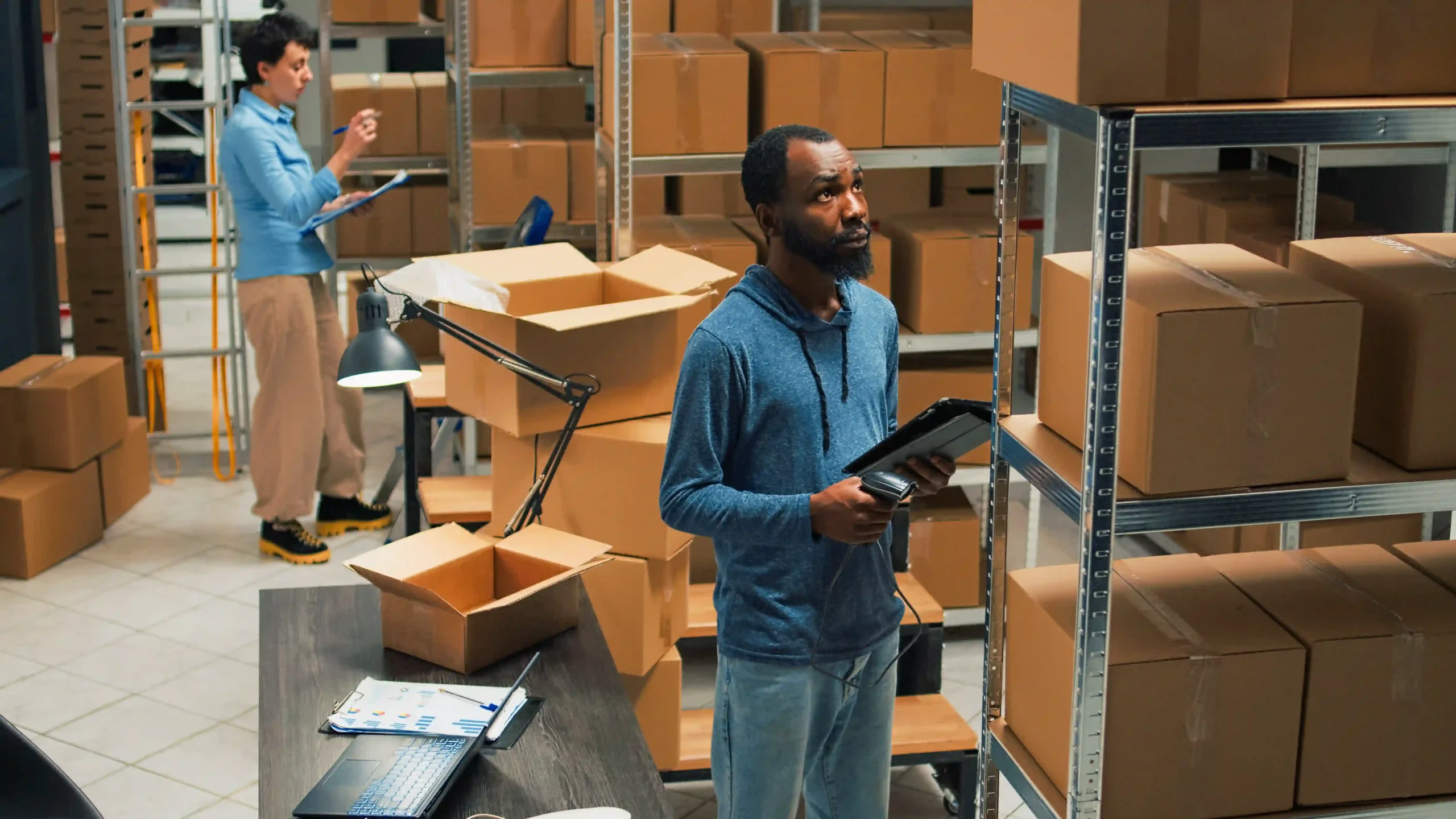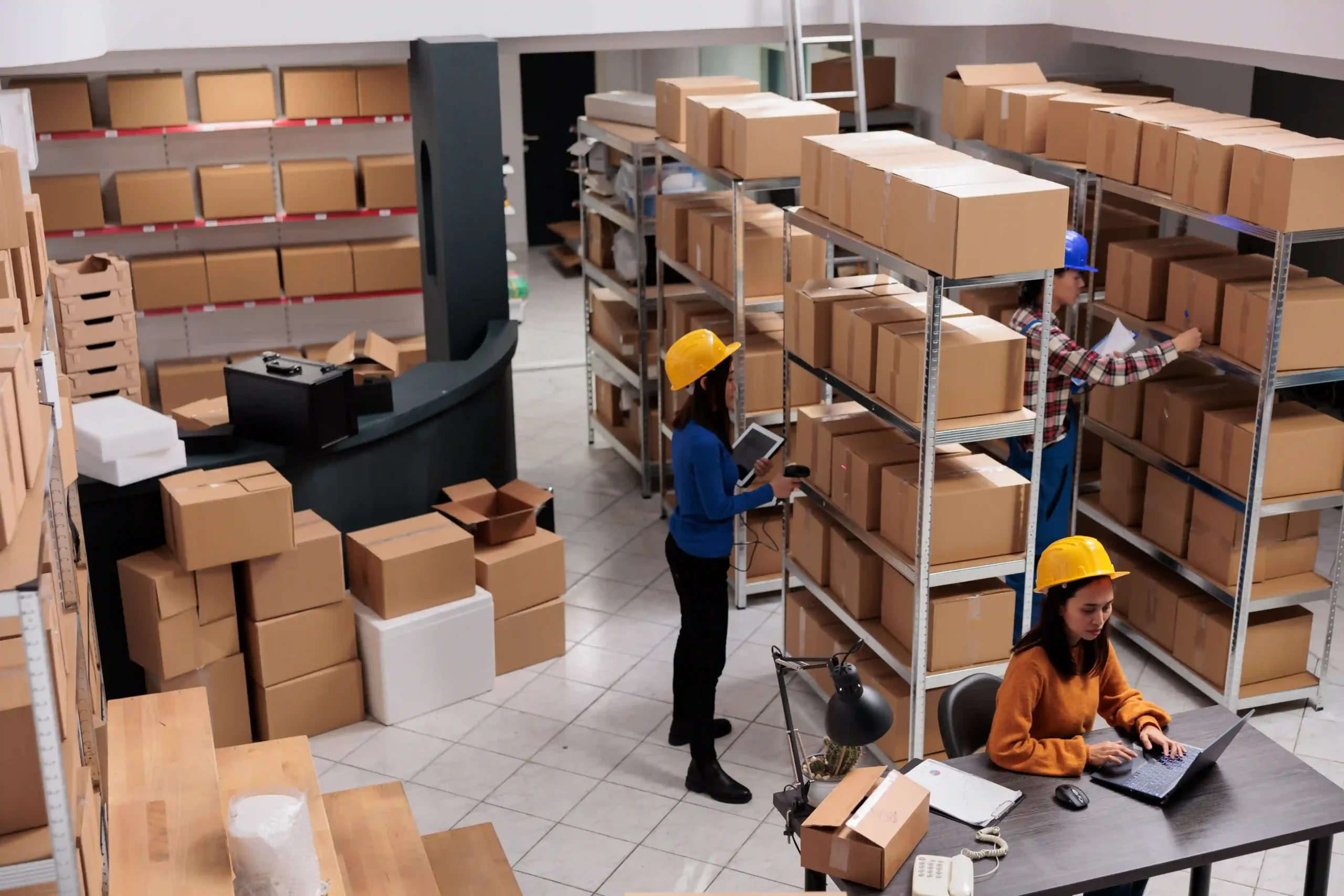Order processing in a warehouse refers to the workflow that kicks off when a customer places an order and ends when that order lands in their hands. It involves verifying the order, checking inventory availability, picking items from shelves, packing them securely, shipping them out, and keeping customers informed the entire time.
It’s a process that touches nearly every part of warehouse operations. And when done right, it creates a seamless experience for both the business and the customer.
When done poorly, it leads to delays, returns, and a loss of trust.

After 35 years running Tri-Link FTZ, I can say without hesitation: order processing is one of the most underrated drivers of business success. It’s not glamorous—but it’s absolutely mission-critical.
When your order processing system is efficient, you cut waste, reduce labor hours, and keep customers happy. You avoid the chaos of backorders, stock discrepancies, and missed deliveries.
Most importantly, you create repeat business. In our line of work, the true cost of inefficiency is hidden in lost opportunity.
A delayed order isn’t just a one-time mistake—it’s a dent in your reputation. At Tri-Link, we’ve built systems designed to eliminate that risk from the start.
Let’s walk through what order processing in warehouse operations looks like, step-by-step:
Order Placement: This is where the journey begins. Whether it’s a website, phone call, or EDI system, an order enters your workflow. That data has to be captured cleanly and instantly.
Order Verification & Inventory Sourcing: The system verifies that the order details are accurate and that inventory exists. If something is off here, the whole process starts on shaky ground.
Picking: A picking list is generated, usually through your WMS, and your team goes to the shelves to grab what’s needed. The method (batch, zone, or wave) depends on your layout and volume.
Packing: Once items are picked, they’re packed with care. At Tri-Link, we also focus on optimizing package dimensions to reduce shipping costs.
Shipping: Orders are labeled, sorted by carrier, and staged for pickup. Integration with carriers helps automate this process for speed and traceability.
Tracking & Customer Support: Customers receive a tracking number, and support teams are available to handle issues or returns. This last mile is often where loyalty is won—or lost.
Even with a solid plan, things can go sideways. Here are some of the challenges we often help clients address:
Human Error: Manual data entry, mispicked items, or skipped steps all lead to incorrect shipments. Over time, these errors pile up and eat into margins.
Inventory Inaccuracy: If your system says a product is in stock—but it’s not—your customers are in for a disappointment. This can also throw off demand planning and procurement.
Inefficiencies in Workflow: We’ve walked into warehouses where pickers zigzag all day long. Poor layout and unclear SOPs slow everything down.
System Silos: If your CRM, ERP, and WMS aren’t integrated, orders can fall through the cracks. At Tri-Link, we help unify these platforms for better data flow.
Seasonal Scalability: When order volume spikes (think holidays), your normal processes may collapse. Without scalability built in, customer satisfaction nosedives.

We’re big believers in using technology to remove friction from order processing in warehouse environments. Here’s what makes the biggest difference:
WMS (Warehouse Management Systems): This is the brain of your operation. It connects every task—from inventory updates to picking logic—and keeps everything synchronized.
Barcode & RFID Scanning: Replacing manual entry with barcode scans improves speed and accuracy. We implemented this years ago and saw a 30% reduction in picking errors.
Automation: Conveyor systems, automated sorting, and even robots now handle tasks that once needed five people. This increases throughput and reduces labor dependency.
Real-Time Inventory Tracking: Knowing exactly what’s in stock (and where) prevents backorders and improves allocation across multiple locations.
Integration with Other Systems: Whether it’s Shopify, NetSuite, or a freight broker API—your systems should talk to each other. No more copy-pasting between platforms.
Getting order processing right means doing the basics—exceptionally well. These are the strategies we’ve seen transform warehouses:
Standardize Everything: SOPs should exist for each workflow stage. That way, performance is repeatable and trainable.
Train Often: Don’t just onboard and forget. We retrain staff quarterly and after every system update.
Optimize Layouts: Reduce travel time for pickers. Use ABC analysis to place high-volume SKUs in easy-to-reach areas.
Use Quality Control Checkpoints: A second set of eyes during packing can catch errors before they reach the customer.
Track Performance: You can’t improve what you don’t measure. Track KPIs and use them to refine your workflow monthly.
Returns are expensive—financially and reputationally. At Tri-Link FTZ, we approach error reduction with precision.
We rely on barcode scans during picking and again during packing. This double-layer of verification cuts mis-shipments drastically.
We also use visual confirmation software at our packing stations to verify contents match the order digitally. Another tactic is documenting return reasons.
We analyze this monthly. If certain SKUs or team members have higher return rates, we dig deeper and fix the root cause.
Lastly, we build transparency into the process. If there’s an issue, we tell the customer before they find it out themselves.
That builds trust—even when things go wrong. Read more here.

To run a lean, high-performing operation, here are the KPIs you should never ignore:
Order Accuracy Rate: What percentage of your orders are shipped correctly the first time?
Order Processing Time: How long does it take from order received to shipment?
On-Time Delivery Rate: Are your customers getting their orders when promised?
Cost Per Order: How much does it cost in labor, materials, and tech to fulfill each order?
Return Rate: What percent of orders come back—and why?
Tracking these numbers over time allows you to spot trends, allocate resources, and improve workflows without guesswork.
Customers don’t see your warehouse—but they feel its efficiency. Fast, accurate deliveries make people come back.
Messy fulfillment sends them to your competitor. From a profitability standpoint, optimized order processing in warehouse settings reduces rework, overtime, and customer service escalations.
It improves inventory turnover and frees up cash. It even reduces the need for emergency shipping.
We’ve helped clients slash costs by 15–25% just by optimizing how their orders are processed. That’s pure margin added back to the bottom line.
Here’s what we recommend looking for when choosing your tech stack:
Don’t forget to ask how the software plays with your current systems—seamless integrations are worth their weight in gold.

This is where we shine. Tri-Link FTZ has over three decades of experience optimizing supply chains.
When companies come to us, it’s usually because growth has outpaced their systems. We bring structure, technology, and staffing to simplify operations and cut costs.
We handle everything from receiving and storing your goods to processing orders, kitting, labeling, packing, shipping, and returns. We even handle customs and FTZ-specific compliance.
You don’t just get a warehouse—you get a partner that understands your entire business model. Working with a 3PL allows you to focus on what you do best—product development, marketing, and growth—while we make sure every order leaves the dock exactly as it should.
Order processing in warehouse operations is your hidden superpower. When it’s seamless, your customers stay loyal. When it’s broken, your business suffers in silence.
At Tri-Link FTZ, we believe fulfillment should be a strategic advantage—not a logistical headache. Whether you’re just starting to scale or already shipping thousands of units a day, we can help you build a system that grows with you.
This isn’t just a warehouse. This is where your reputation is packed, labeled, and delivered.
Share this article
We have other resources available upon request as well as one-on-one support and personalized answers, just like our services.
Simply contact us anytime and we’ll get back to you to answer your questions and provide meaningful answers that show you how Tri-Link supports your logistics, reduces costs, and accelerates efficiency.
Tri-Link delivers exceptional FTZ and 3PL services tailored to your global trade needs.
Our solutions combine innovation, quality, and efficiency to exceed your expectations and meet your specific requirements.